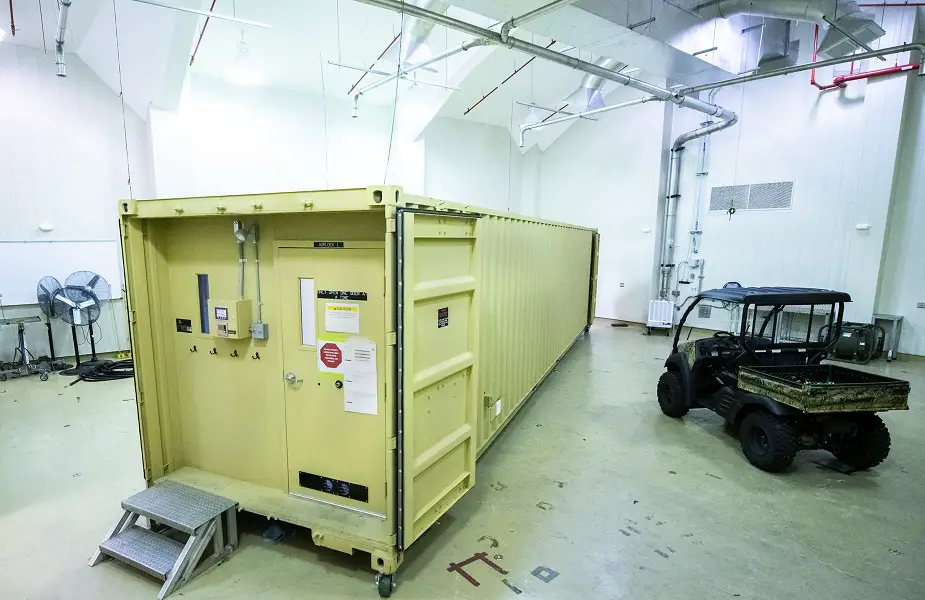The 28th Test and Evaluation Squadron recently tested a modified shipping container called a Collective Protection Conex against biological and chemical attacks during a week-long demonstration.
Follow Air Recognition on Google News at this link
 A modified shipping container called a Collective Protection Conex sits in the 28th Test and Evaluation Squadron's Agile Combat Support division's large-scale, controlled environment facility at Eglin Air Force Base, Fla., Oct. 20. The division evaluated the heavily modified and instrumented conex’s airlock functionality, clean-air requirements, purge rates, leakage tests and overall ability to withstand in a biologically and chemically contaminated environment (Picture source: USAF)
A modified shipping container called a Collective Protection Conex sits in the 28th Test and Evaluation Squadron's Agile Combat Support division's large-scale, controlled environment facility at Eglin Air Force Base, Fla., Oct. 20. The division evaluated the heavily modified and instrumented conex’s airlock functionality, clean-air requirements, purge rates, leakage tests and overall ability to withstand in a biologically and chemically contaminated environment (Picture source: USAF)
The squadron’s Agile Combat Support Division managed the CPC test in their unique controlled-environment facility. The division’s engineers and chemists evaluated the heavily modified and instrumented conex’s airlock functionality, clean-air requirements, purge rates, leakage tests and overall ability to withstand a contaminated environment.
During the testing, the CPC was exposed to chemical and biological simulants carefully disseminated and monitored to ensure an operationally relevant environment. All measurements and results were recorded through ACS’s calibrated instrumentation.
The goal of the successful demonstration was to evaluate and prove the CPC could withstand an attack and maintain a toxic-free environment within the container, while maintaining the appropriate purge rates within the airlock configurations.
After test completion Oct. 19, the data collected proved the material and technology used to construct the CPC was appropriate for maintaining a toxic free environment, according to Capt. Jason Kons, ACS division chief.
The CPC project, six years in the making, was created to provide a protected environment for aircrew, maintainers and flight line workers in the event of a chemical and/or biological attack.
“Without ground power, there is no air power,” said Kons. “Our Airmen need to know they can confidently carry out our nation’s defense strategy effectively and efficiently, while preserving their health and safety.”
The CPC design changed and shifted last year based on real world COVID-19 requirements. The overall CPC goal to keep containments out was reversed engineered for the Negatively Pressurized Conex. The NPC kept contamination on the inside instead during its use transporting more than 200 COVID-19 patients around the world. The ACS division here also participated in the NPC testing as well.
The ACS’s successful results and data moves to the Air Force Life Cycle Management Center’s Human Systems Division to continue with the CPC’s development.
“Our Air Force strategy of posturing and projecting air power all over the globe relies on our ability to launch and recover aircraft from the ground,” said Kons. “Based on the evaluation results, our Airmen will have the opportunity to operate confidently in every corner of the globe, regardless of contested circumstances.”
The 28th TES is a 53rd Wing unit headquartered at Eglin Air Force Base.
















